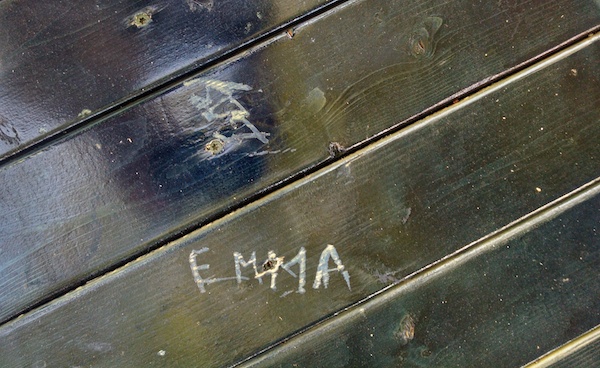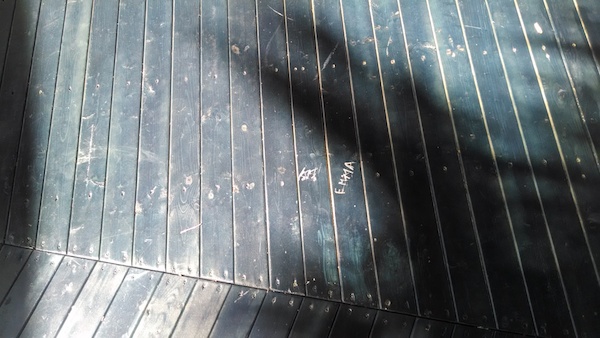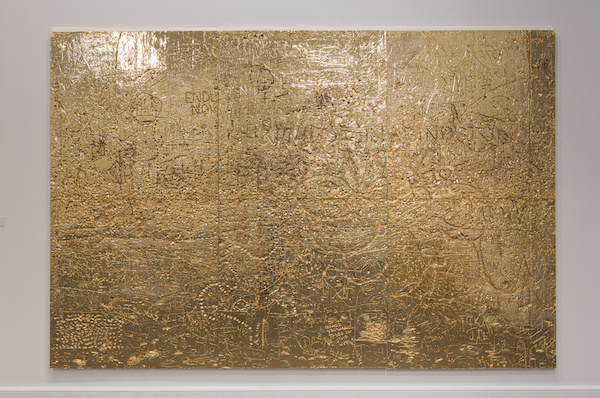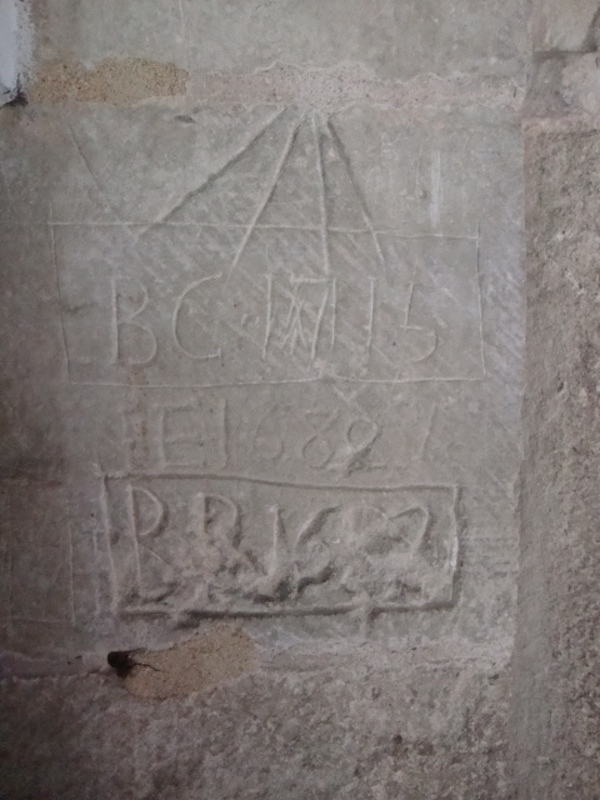
Displaying Public Art (or, can a public artwork be a little too ‘loved’?)
By Elizabeth Shannon, Bass Museum of Art
Unbelievable as it may seem, Art Basel in Miami Beach is just around the corner and so the Bass Museum of Art is gearing up to prepare Collins Park for the installation of another “Public” exhibition. As a result, we will be deinstalling several works that have spent the year in the park as part of “tc: temporary contemporary”: Christy Gast’s “Self Portrait as the Barefoot Mailman” (2013); Emmett Moore’s “Points of Pine” (2014); and Santiago Roose’s “Theoretically Stable System” (2013).
After the initial double-takes (particularly when we installed the topsy-turvy “Barefoot Mailman,” these works have become familiar friends, enjoyed by residents and visitors alike. So far this year we have been very lucky in terms of the public’s treatment of the works, but occasionally interaction with the art gets a little too hands-on. While the “Barefoot Mailman” and Roose’s “Theoretically Stable System” are not intended to be sat on or touched by viewers (as indicated by their signage), as I have previously blogged, Moore encourages physical interaction with “Points of Pine”, and unfortunately one of his decks was graffitied shortly after it arrived in Collins Park.
Who is this “EMMA”, and why is her name on Emmett’s deck?Emmett Moore, “Points of Pine” (2014). Photo: Liz Shannon

Shouldn’t it say “Emmett” instead?Emmett Moore, “Points of Pine” (2014). Photo: Liz Shannon
Certainly, one of the risks of displaying art in a publically accessible outdoor space is the potential for damage, whether caused by the elements, an accident, or on purpose. While we take precautions to prevent such incidents – by carefully considering the siting of each work, displaying appropriate signage, and sometimes having additional security – it is impossible to guard against all eventualities. Graffiti is one of the more predictable types of interference: indeed, a survey of art vandalism in the UK by Dr Helen Scott revealed graffiti to be the most common type of impairment. According to her study, such actions always have an intent (for example, to impress peers or alleviate boredom), although the precise meaning of the action is rarely clear.
Luckily for us, Moore took this ‘alteration’ to his work in his stride, and the graffiti was relatively easy to erase. We were unable to discover who had inscribed the deck, and so could not establish if the graffiti was just written in an idle moment, or etched by a lovelorn soul who had a thwarted romance with the notorious ‘Emma’.

Rudolf Stingel, “Untitled” (2012), galvanized cast copper. Collection of Francois Odermatt. Photo: Silvia Ros
Strangely enough, our current exhibition, GOLD, includes a work by Rudolf Stingel, which features marks made by visitors who attended one of the artist’s exhibitions, and were encouraged to scratch into soft insulation panels, which were then cast in copper and electroplated in gold. Unfortunately we will not be doing this to Moore’s work, so ‘Emma’ will not be immortalized forever. On a more positive note, while irritating to remove, the graffiti on Moore’s piece was evidence that someone had spent time reclining on one of his decks – the work was being used (more or less) as the artist intended! And while I absolutely discourage this type of graffiti (unless an artist like Stingel requests you to do so), careful examination of most historic public buildings reveals some sort of graffiti, such as these examples from a church in the UK. It is extremely common.

Even in 1682, people felt the need to graffiti things…Entrance to St Nicholas’ Church, Bishops Sutton, UK. Photo: Liz Shannon
In an ideal world, this type of graffiti would be confined to areas where it is welcomed (as in Stingel’s work), particularly since repeated instances can affect the viability of future public art projects. Plus, there are many more constructive and productive ways that the public can interact with public works of art. In the case of Moore’s “Points of Pine”, just relaxing on these decks is interaction enough.
If you would like to take a seat on “Points of Pine”, admire the “Barefoot Mailman”, or “Theoretically Stable System”, please make sure you do so by Sunday, October 19, when we say goodbye to these works, and welcome an exciting new piece by Jim Drain.
Recent Content
-
Artsarticle ·
-
Artsarticle ·
-
Artsarticle ·

